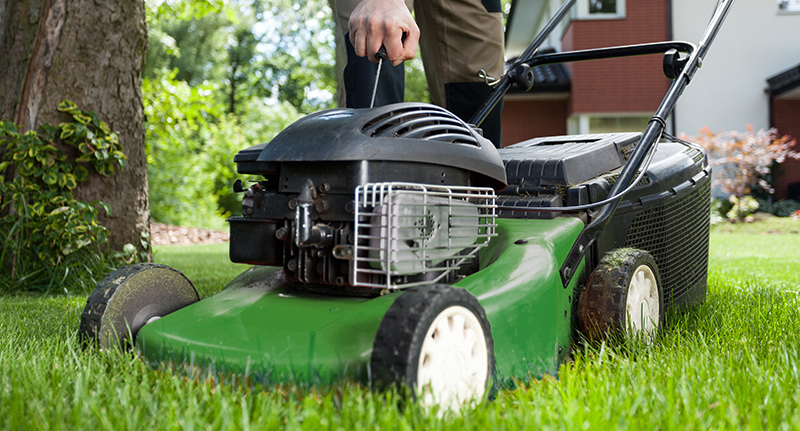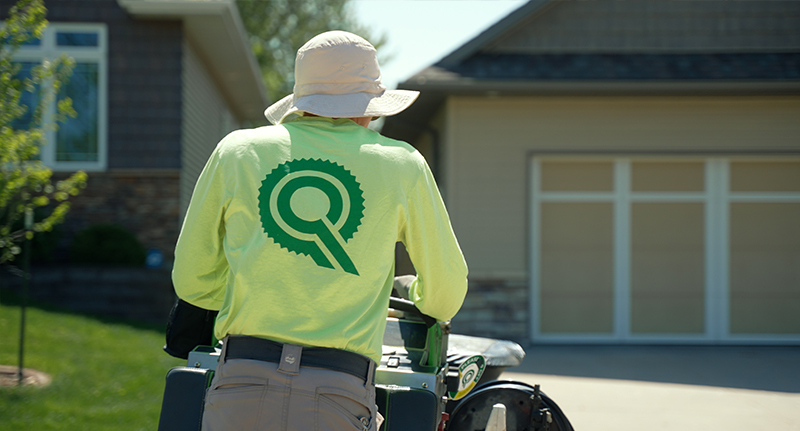We’ve officially entered the hottest stretch of the year. With daytime temperatures soaring and humidity levels high, our air conditioners aren’t the only ones feeling the strain — our lawns are too. Soil temperatures are climbing into the mid to high 80s, which is far from ideal for our cool season grasses.
These grasses thrive in cooler conditions, which is why they perform best in spring and fall. During the summer months, they naturally experience stress, and our goal is to help them endure this period so they can make a strong recovery when cooler weather returns.
Why Summer is Stressful for Your Lawn
Cool season grasses store carbohydrates (energy) during favorable conditions. These reserves help them recover from stress caused by:
- Heat
- Drought
- Disease
- Pests
- Improper mowing practices
The more stress a plant experiences, the more of these stored reserves it uses. Once those reserves are depleted, turf damage begins. We saw this in the spring with areas of winter kill — caused by insufficient stored nutrients from the previous growing season.
If your lawn received our spring application with slow-release fertilizer, it is still benefiting from a steady supply of nutrients to help through this stressful season.
Fortunately, recent timely rains have helped keep lawns from going dormant. Dormancy is a natural survival mechanism where the plant shuts down top growth to conserve energy and protect the root system. While unavoidable, we want to support the plant so it has the reserves it needs to survive this period.

Summer Stress Relief Tips
1. MOWING MATTERS
- Mow High: Raise your mowing height. Taller grass shades the soil, helping keep soil temperatures lower and conserving moisture.
- Change Blades: Dull mower blades tear rather than cut the grass, increasing stress and vulnerability to disease. For lawns under 15,000 square feet, now is the time to sharpen or replace blades.
2. Water Wisely
- How Much: Cool season grasses need about 1 inch of water per week
- When: Water early in the morning, ideally starting around 3:00 – 4:00 a.m. and finishing by sunrise
- How: Water deeply (more than ¼ inch per session) to encourage deep root growth
- Avoid midday watering — most of the water will evaporate
- Avoid nighttime watering — leads to wet foliage overnight, which promotes disease
3. disease
Recent hot, humid conditions combined with high dew points create ideal conditions for fungal diseases. While expensive fungicides can help as a preventive tool, cultural practices are the best defense:
- Mow high
- Water properly
- Aerate when needed
- Maintain overall lawn health
Preventive fungicide use is more effective than curative, which only offers temporary protection and must be timed and watered-in perfectly, multiple times per season. We don’t recommend the use of fungicides and because of these reasons we feel residential lawns will benefit more from cultural practices rather than chemical fungicides.

Summer Applications Are Underway
We are currently applying our summer treatment, targeting:
- Broadleaf weeds
- Annual summer grassy weeds
This round is crucial as weeds compete directly with turf for water and nutrients. We’ve also adjusted our weed control formula for optimal performance in current hot and humid conditions.
questions, comments, or concerns? don’t hesitate to reach out to our team.
A MOMENT OF THANKS
We truly appreciate your continued trust and support during this challenging season. Our goal is to help your lawn survive and thrive, and we hope these tips help ease some of the summer stress on your turf.
As always, if you have any questions, concerns, or just want to chat about your lawn — we’re here for you. We love what we do, and we’re passionate about creating and maintaining beautiful, healthy landscapes.
Stay cool,
Your Lawn Care Team

